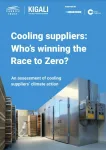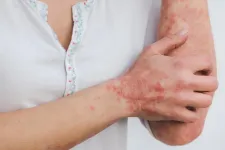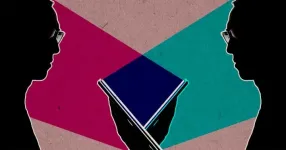Until now, little has been known about the trade-offs between the health benefits of physical activity taking place outdoors and the potentially harmful effects of air pollution. Previous research by the authors of the current study had investigated the question in middle-aged people at a single point in time, but this is the first time that it has been investigated in people aged between 20-39 years over a period of several years. In addition, the researchers wanted to see what happens when people increase or decrease their physical activity over time.
The researchers from Seoul National University College of Medicine (South Korea), led by Professor Sang Min Park, looked at information from the National Health Insurance Service (NHIS) in South Korea for 1,469,972 young Koreans living in cities, who underwent two consecutive health examinations during two screening periods: 2009-2010 and 2011-2012. They followed up the participants from January 2013 to December 2018.
At each health check-up the participants completed a questionnaire asking about their physical activity in the past seven days and this information was converted into units of metabolic equivalent task (MET) minutes per week (MET-mins/week). The participants were divided into four groups: 0, 1-499, 500-999 and 1000 or more MET-mins/week. European Society of Cardiology guidelines recommend people should try to do 500-999 MET-mins/week and this can be achieved by, for example, running, cycling or hiking for 15-30 minutes five times a week, or brisk walking, doubles tennis or slow cycling for 30-60 minutes five times a week. [2]
The researchers used data from the National Ambient Air Monitoring System in South Korea to calculate annual average levels of air pollution, in particular the levels of small particulate matter that are less than or equal to 10 or 2.5 microns in diameter, known as PM10 and PM2.5 [3]. The amount of exposure to air pollution was categorised at two levels: low to moderate (less than 49.92 and 26.43 micrograms per cubic metre, μm/m3, for PM10 and PM2.5 respectively), and high (49.92 and 26.46 μm/m3 or more, respectively). [3]
Dr Seong Rae Kim, first author of the paper, said: "We found that in young adults aged 20-39 years old, the risk of cardiovascular diseases, such as stroke and heart attack, increased as the amount of physical activity decreased between the two screening periods in the group with low levels of exposure to air pollution.
"However, in the group with high levels of exposure to air pollution, increasing the amount of physical activity to more than 1000 MET-min/week, which is more than internationally recommended levels for physical activity, could adversely affect cardiovascular health. This is an important result suggesting that, unlike middle-aged people over 40, excessive physical activity may not always be beneficial for cardiovascular health in younger adults when they are exposed to high concentrations of air pollution."
He continued: "Ultimately, it is imperative that air pollution is improved at the national level in order to maximise the health benefits of exercising in young adults. These are people who tend to engage in physical activity more than other age groups while their physical ability is at its best. If air quality is not improved, this could result in the incidence of cardiovascular diseases actually increasing despite the health benefits gained from exercise."
The researchers adjusted their results to take account of factors that could affect them, such as age, sex, household income, body mass index, smoking and alcohol consumption. During the follow-up period there were 8706 cardiovascular events. Among people exposed to high levels of PM2.5 air pollution, those who increased their exercise from 0 to 1000 MET-min/week or more between the two screening periods had a 33% increased risk of cardiovascular disease during the follow-up period compared to those who were physically inactive and did not increase their exercise, although this result was slightly weaker than that needed to achieve statistical significance. This means an extra 108 people per 10,000 might develop cardiovascular disease during the follow-up period.
Among people exposed to low to moderate levels of PM2.5, those who increased their physical activity from none to 1000 MET-min/week or more had a 27% reduced risk of developing cardiovascular disease compared to those who remained inactive, although this result was also not quite statistically significant. This means 49 fewer people per 10,000 might develop cardiovascular disease during the follow-up period.
Dr Kim said: "These results are very close to statistical significance. In fact, a further analysis presented in Figures 2 and 3 of our paper shows that statistical significance was achieved for increasing and decreasing amounts of physical activity."
For low to moderate levels of PM10 air pollution, there was a statistically significant 38% or 22% increased risk of cardiovascular disease among people who started off doing 1000 MET-min/week or more and then reduced their activity to none or to 1-499 MET min/week, respectively, compared to people who maintained the same high level of activity. These results were statistically significant and mean that 74 and 66 extra people per 10,000 respectively would develop cardiovascular problems during the follow-up period.
Professor Sang Min Park, who led the research, said: "Overall, our results show that physical activity, particularly at the level recommended by European Society of Cardiology guidelines, is associated with a lower risk of developing heart and blood vessel disease among young adults. However, when air pollution levels are high, exercising beyond the recommended amount may offset or even reverse the beneficial effects."
The study cannot show that air pollution causes the increased cardiovascular risk, only that it is associated with it. Other limitations are that there was no information on whether or not the exercise took place indoors or outdoors; participants may not have remembered correctly the amount of exercise they took in the seven days before they attended their screening interview, although this is unlikely; PM2.5 data were only measured in three major cities; and the researchers did not investigate the short-term effects of exposure to air pollution.
INFORMATION:
Notes:
[1] "Association of the combined effects of air pollution and changes in physical activity with cardiovascular disease in young adults", by Seong Rae Kim et al. European Heart Journal. doi:10.1093/eurheartj/ehab139
[2] Examples of activity for each of the MET-min/week categories:
0 MET-min/week: No physical activity at all;
1-499 MET-min/week: Running, bicycling, hiking etc. less than 15 minutes a day and less than 5 times a week / Brisk walking, doubles tennis, slow cycling, etc., less than 30 minutes a day and less than 5 times a week;
500-999 MET-min/week: Running, bicycling, hiking etc. 15-30 minutes a day and about 5 times a week / Brisk walking, doubles tennis, slow cycling, etc., 30-60 minutes a day and about 5 times a week;
More than 1000 MET-min/week: Running, bicycling, hiking etc. more than 30 minutes a day and about 5 times a week / Brisk walking, doubles tennis, slow cycling, etc., more than 60 minutes a day and about 5 times a week
[3] A micron is one millionth of a metre.




